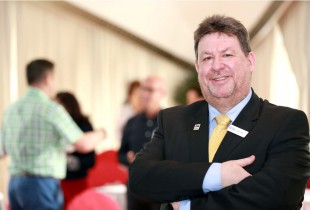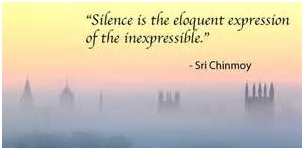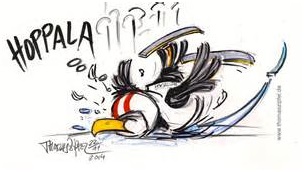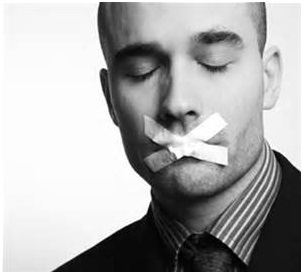 |
| Judith Barton, Director of Coaching |
What makes me keep watching is the depth of discussion a cross between BBC Breakfast and Newsnight, with humour, sarcasm and discussion on British sport. Sometimes Katty Kay BBC America journalist is a guest which makes me feel more connected when I hear her voice and smile at the quality of her arguments. Anyway, on such a morning, Joe introduced a guest he described, (Brené Brown, author of ‘Rising Strong’, published by Vermilion in 2015), a research professor who was making a difference to how individuals run their organisation and manage their people in the US. Brené’s work focuses on courage to take the step, the bravery needed to be vulnerable, to say it is OK to fall down, and the strength to get up and move forward.
In her earlier publication ‘Daring Greatly: How the Courage to be Vulnerable Transforms the Way We Live, Love, Parent and Lead’ she quotes Theadore Roosevelt powerful quote from his 1910 ‘Man in the Arena’ speech: “It is not the critic who counts; not the man who points out how strong the man stumbles, or where the doer of deeds could have done them better. The credit belongs to the man who is actually in the arena, whose face is marred by dust and sweat and blood; who strives valiantly;… who at the best knows in the end the triumph of high achievement, and who at the worst, if he fails, at least fails while daring greatly.”
One of the things that makes Brené’s work interesting to me is her background research and what has led her to her writing. She describes how she has fought against the qualitative research, the introduction to ‘Rising Strong’ describes her time as a doctoral student, trained by research professors to choose evidence over experience and data over story. Whilst non-research professors were reminding her she should be a live to false dichotomies she quotes “either you’re this or you’re that”. She goes on to say how she learned when faced with either or dilemmas to ask “who benefits by forcing people to choose?” This rang a loud bell in my head, in situations like this I ponder “who’s asking the question?” and this often leads to the next question “for what purpose?” Brené gives an example of benefits; traditional quantitative researchers benefited if the social work profession decided their quantitative work was the only path to truth.
There was very little training in qualitative research methods and the only dissertation option for Brené was quantitative. As a career professor and researcher she describes how the way to get on was through “if you can’t measure it, it doesn’t exist”. Brené Brown cites her light bulb moment in the 1990s when Paul Raffoul a professor gave her a copy of the editorial by Ann Hartman ‘Many Ways of Knowing’. “In the editorial Hartman wrote: This editor takes the position that there are many truths and there are many ways of knowing. Each discovery contributes to our knowledge, and each way of knowing deepens our understanding and adds another dimension to our view of the world… Both the scientific and the artistic methods provide us with ways of knowing.”
As coaches it seems to me we work with stories all the time. Our clients often open a session with a story, which requires deep listening and probing to begin untangling the story. Imagine a very tangled necklace, it may need more that one pair of hands. Just in the same way a client may find using a coach key to untangling their story and their thinking. For a client to achieve their goals they are often taking risks dealing with their self esteem and pride. Ultimately to achieve their goal they must be in the arena. Returning to the Roosevelt quote “the credit belongs to the man who is actually in the arena”, in British parlance “you’ve got to be in it to win it”.
The arena could be any environment where we might show up and risk being seen, the classroom, the office, the interview, the teambuilding exercise, chairing the meeting. This is your arena, your moment of courage to be vulnerable, this is the difference from those who sit on the sidelines.
What is clear to me as a coach, every client will have a unique story. I never cease to be amazed by the capability of clients. What I personally advocate is we all need ‘stretch’ in our lives to do more or things different than we thought we could. For me this is healthy, it keeps us mentally fresh and sharp.
For this we need to be in our arena. Being in our arena means we will be vulnerable. Vulnerability is courage – “vulnerability is not winning or losing, it’s having the courage to show up and be seen when we have no control over the outcome”. Think of that job interview – you put yourself forward with little or no control over the outcome. The personal risk, the vulnerability, the courage to apply. Other people, the sideline people, those who observe from the cheap seats are often quick to comment and dare I say criticise but not brave enough to put themselves in the arena. I am sure many of us have experienced the comments from the cheap seats, I have – and it is an important life rule to choose not to listen and don’t become a cheap seat commentator.
Brené Brown argues there are some basic principles, she calls them “basic terms of emotional physics – the rules of engagement for rising strong:
1. If we are brave enough often enough, we will fall at some point – getting up and learning from this is the key.
2. Once we fall in the service of being brave, we can never go back – when we are courageous and we try something new in our arena we are learning and therefore have built knowledge. For a coach this is the continuous development we should seek through reflection, supervision and application to practice.
3. This journey belongs to no one but you, however, no one successfully goes it alone – this is your clients journey and your journey as a coach a successful coaching/mentoring relationships knows when you are better together and when it is best to separate. Both client and coach should access their own CPD, peer support and networks – it is your journey.
4. We’re wired for story – neuroeconomist Paul Zak says hearing a story with a beginning, middle and end causes our brains to release cortisol and oxytocin chemicals trigger the ability to connect, empathise and draw out meaning.
5. Creativity embeds knowledge so that it can become practice. We move what we’re learning from our heads to our hearts through our hands – think of using rehearsal in coaching or working with a client who uses creativity to develop their ideas in a session.
6. Rising strong is the same process whether you’re navigating personal or professional struggles – our worlds overlap, there is no separation between business and personal. Clients often ask am I ok to talk about this? We are whole people, one part of our life affects the other.
7. Comparative suffering is a function of fear and scarcity – remember to respond with empathy and compassion.
8. You can’t engineer an emotional, vulnerable, and courageous process into an easy, one-size-fits-all formula – everyone of us is unique and a positive outcome will require effort and an element of risk. As coaches we must continually refine our skills to support clients and have access to supervision to support ourselves.
9. Courage is contagious – others will benefit from your courage.
10. Rising strong is a spiritual practice – Remember “grace will take you places hustling can’t” from Liz Gilbert’s Instagram.





